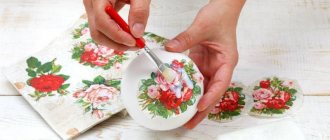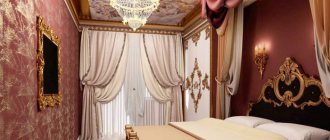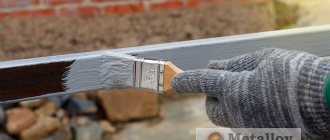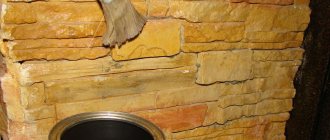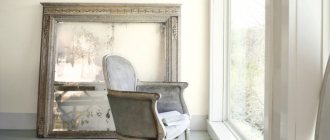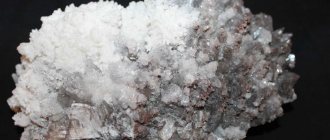Types of paint for glass and ceramic products
Coverage may vary. Some paints are applied to a “raw” unfired product and then subjected to heat treatment; this type includes cobalt paint. When applied to a product, it has a gray color, but after the oven it acquires the famous blue tints of Gzhel.
However, there are many more non-fired ceramic paints on the market. They are applied to the finished product and allowed to dry. This group includes acrylic paints for glass and ceramics. They have a rich palette, different packaging and it is very convenient to work with such a coating.
Craft stores offer a huge selection of both ceramic paints themselves and manufacturers. You can purchase ready-made sets of 6-10 bottles of different colors, or you can choose the colors you need yourself.
The purpose and type of the finished product is of great importance. A craftsman who makes items for sale will give preference to quality; parents who decide to work with their children are more likely to choose a ready-made inexpensive set for creativity. To create stained glass you will need special translucent water-based paints and a so-called outline. It is better to purchase the latter not a universal one, but a special one for working with glass and ceramics. Some paints cannot be applied to items used for serving food, others are completely unstable to water and detergents. You should carefully study the instructions before purchasing paint or consult with store salespeople.
Attention! Inexpensive acrylic paints without firing are washed off with water, but expensive ones can be easily scratched with a knife or fork. Therefore, for painting everyday dishes, it is better to use coatings that require heat treatment.
Features of paints
Water-based paints for glass and ceramics are used to decorate dishes, as well as many other products of any shape. Ceramic products painted with these materials can be washed in water after firing, preserving the image.
Ceramic paints are made by mixing colorless glazes, clays and fluxes with pigments of natural or artificial origin.
Based on the method of application, coatings are divided into underglaze and overglaze. In the first case, the composition is applied before firing, so it appears under the glaze, and in the second - on products that have already been fired. In order for the paint to adhere to the ceramic surface, binders such as glycerin, sugar and other components are added to the material. Salts of various metals are used as elements for painting ceramic surfaces.
Paints for glass and ceramics consist of flux, which is silicate glass that melts easily, mixed with metal oxides. Most often, masters of artistic painting, after firing, paint the product with oil compositions, gouache, tempera, and watercolor, after which they coat the product with varnish.
Paints for ceramics and porcelain must be of high quality and safe for the user. This is especially true for materials applied to the surface of dishes with your own hands. It is advisable to select brushes for them that are of excellent quality and quite expensive. For relief painting you need to use a special clay paste. The simplest and most affordable way of painting is using aerosols.
The preparation of glass and plastic for painting is the same. First, the surface is degreased using a simple detergent, alcohol or white spirit. Next, primer is applied. Decoupage can be done using a napkin.
It is recommended to apply a finishing varnish to the painted surface, preferably in three layers. Sometimes you have to apply more layers of varnish.
Foreign manufacturers of acrylic paints
Italian paints IDEA Vetro for stained glass painting are completely unstable to external influences and cannot be used for food purposes. They do not require firing and are made on an organic basis.
Professional paints from Kreul Hobby Line, made in Germany, are very durable and have a rich palette of colors. After painting, the product must be kept in an oven for 90 minutes at a temperature of 160 degrees.
Hobby deLUXE professional acrylic paints are an excellent choice for items for sale. Although the series is universal, the coating is perfect for working on ceramics and glass. The paints do not require heat treatment and are resistant to abrasion and water. However, they cannot be used for everyday dishes; the coated jars themselves are quite large and cost more than their analogues, and the palette consists only of delicate pastel colors.
Domestic producers of acrylic paints
Among Russian manufacturers, paints for ceramics and glass can be noted: Olki, Gamma and Decola. All of them do not require firing and are not very resistant to abrasion. Products from the Olki series can rarely be found on sale; the paints themselves are practically no different from universal acrylic ones. Gamma coatings have a too liquid consistency and are inconvenient to work with, and the color palette is meager, dull and inexpressive.
Perhaps, among domestic products, the choice of Decola paint for glass and ceramics will be optimal in terms of price and quality ratio. The Neva palette creates coatings of bright and rich colors. Paints for ceramics are waterproof and are subject only to external mechanical influences, which means they are suitable for decorative purposes. The line includes ready-made sets and stained glass coverings. Decola paints for ceramics and glass are presented in two versions: matte and metallic, the same applies to the manufacturer’s contours.
How different colors are obtained
Most pigments are found in the form of highly dispersed powders with various color shades. They are quite resistant to external factors and do not dissolve in water. There are natural (natural) dyes and synthetic (artificial) dyes.
- Natural dyes are formed by grinding colored ores and clays.
- Synthetic ones are obtained by calcination and fusion of oxides, hydroxides or salts.
The composition of the pigment determines its color. Popular dyes, in demand by many artists today, are used to color blue, purple, green or brown. The master achieves different intensity and saturation not only by the quantitative content of the pigment, but also by the calcination temperature.
The firing temperature and the calcination temperature of the pigment are the two most important parameters when creating the color design of ceramics. You can slightly change this or that shade by increasing or decreasing the calcination time. During firing, a reducing chemical reaction occurs. The reducing agent is the gas environment of the furnace. As a result of this reaction, the substance becomes green.
Yellow pigments are obtained by adding boron-containing elements. Also, shades of yellow form oxides of zinc, lead and uranium. In the oxidation reaction during firing, the same elements can give different colors. Tones range from green to orange.
Red, pink and purple colors are created when gold is added. The shades of these colors are produced by lead oxide, iron oxide, as well as compounds containing cadmium and selenium. The listed chemical elements are called purple, since they are “responsible” for the red color of the pigment. Brown pigments may contain nickel, chromium, manganese and iron. The black color comes from lead flux, and the gray color comes from tin or zirconium.
It makes no sense to increase the proportion of pigment in the manufacture of paints or engobes, since no visible difference is observed, and the material becomes drier. Only oxides can be added in unlimited quantities, since they do not affect the moisture content of the base material, and their saturation can give interesting shades. Experienced craftsmen know which pigments form which shades when mixed with base glazes. This must be taken into account, since not all components are compatible with each other. If it is necessary to obtain pastel shades, then use white glazes. To obtain bright colors - transparent.
When coloring clay masses, it is necessary to know the maximum permissible pigment content. Excessive amounts of powder will weaken the clay.
For example, for porcelain the maximum proportion of dye should not exceed 20%, but for light tinting, 5-8% is enough.
Dry and low-fat clays become difficult to work with. There are masses with a high content of fatty clay. They can add up to 40% pigment. However, this is advisable when obtaining a golden color for inlays and other exclusive items.
Paints for ceramics and glass
Special coatings are required for working with porcelain and earthenware, ceramics and glass. Universal paints cannot always adhere to the smooth and even surface of materials.
You can purchase a ready-made set with basic colors and mix them on a palette to achieve the desired shade. But if the master’s skills and experience in mixing paints are limited, you should purchase colors separately. The Decola palette is very diverse, it contains delicate pastel colors, ordinary matte colors, metallic gloss coatings and bright rich colors.
Special colorless protective varnishes can preserve the brightness of colors and designs. When purchasing, you need to find out whether the coating can be used for food purposes. But even if you couldn’t find a special protective varnish, the product can still be placed on the table, but you should use it rarely and carefully.
Contours for glass and ceramics
This type of material can be used independently and in combination with other paints.
The contour is indispensable for working on glass and creating stained glass windows. They can also be purchased as part of a set or individually. The substances contained in the contours adhere the pigment well to the smooth surface. The stroke outlines the boundaries of the drawing and does not allow the paint to spread over the surface. The most beautiful and unusual works are obtained by combining colors and contours in creativity.
The coating is very easy to use. First you need to come up with a design and select a suitable item. Then take a tube of contour and carefully transfer the drawing, trying not to touch the lines with your hand or fingers. It only takes a little practice in pressing force to obtain the line of the desired thickness.
About painting and decoration of ceramics, paints, primers and other materials
This article was on the blog of my old store, which is no longer relevant, but the information apparently remains relevant, since many masters ask. Therefore, I transfer the text here in a slightly expanded form.
Masters often ask me in personal messages questions about what paints are best to use for painting ceramics, how they contact the ceramic surface, whether it is necessary to prime, and in general, what to do with all this)
I decided that this was a reason to write a post on the topic.
The first thing I want to say is that ceramic products can be coated with glaze (molten glass) or not. It depends on how you can use them.
If the product is glazed inside and out, it can be used practically, pour water, drinks into it, place flowers in this water, etc. If it is glazed only from the inside, and the outer surface remains porous, then its use is limited - it holds water, but if water sits in the vessel for any long time, then it can pass through microcracks.
The unglazed surface is suitable for all types of decoration, except for painting with oil paints - decoupage, decopatch, acrylic, gouache, dot painting, decoration with texture pastes and all types of applique. Everything sticks to a porous shard instantly and dries quickly.
The glazed surface is good primarily for oil - a smooth, non-absorbent base is needed for it. In principle, it is suitable for everything else, but the materials will be more difficult to lay down and will take longer to dry.
So, what colors:
First of all, ACRYLIC. Any. You can have a special one for glass and ceramics, a stained glass window, or just artistic acrylic in tubes. When you use acrylic on ceramics, it gives a glossy, glaze-like finish when applied thickly and shimmer when applied thinly. These paints are translucent, not very opaque, and the shard is visible through them, i.e. ceramic surface. You can prime them under them and this can be done in two ways:
Or cover the entire product with white primer (acrylic white, for example) and apply painting on this coating.
Or apply the first layer of painting with tube acrylic, which will cover the shard, and the second, third, and so on layers with acrylic on ceramics.
Or you can not prime at all, then you get muted, soft colors in a reddish-brown tones, which is also interesting, depending on what your original idea was. When I painted with acrylic, I always painted on an unprimed surface. It turned out like this:
Or, for example, the work of Olga Rodionova (Bottle Maniac), this is my ball vase, glazed on the outside and painted with stained glass paints without primer:
It is recommended to fire acrylic for ceramics in the oven at a low temperature of 160C, but from experience, you don’t have to do this, the paint won’t peel off. And if it peels off at sharp corners, then regardless of whether you burned it or not.
Artistic acrylic in tubes is also good, especially Ladoga. Everything is beautiful here – the colors are bright, opaque, and the pigments are strong. You don't have to prime it. When dry, the paints become completely matte and don’t look very good without varnish (although it depends on what your idea was), so it’s better to varnish them. Varnish, five, acrylic, any brand you like.
You can apply it with a regular brush, a tapping brush, or an airbrush - everything will work well.
painting on ceramics without primer, artistic acrylic, with varnish:
You can even use white construction waterproof acrylic with the addition of colors of the desired color and in the required quantity. This is how ceramic artist Yulia Matsigor works (painting with construction acrylic without varnish):
Oil. Under oil (masters know) a non-absorbent surface is needed, so primer or glaze is required. There are again several options. The first is that you prime or varnish the surface yourself, using any primer. You can use the same acrylic, oil fits perfectly on it.
Second - you order me already primed blanks. I coat them with the color and/or varnish you want. This is how I work with craftsmen who paint pendants. It will cost more.
And the third option - I make blanks to your order, glazed not only from the inside, but also from the outside in the color you need. Ceramic glaze is the same as glass, so the surface of the workpieces will be perfectly smooth and waterproof. The price in this case is also negotiated separately.
Painting by Yuralga Nord based on my primed blanks (oil):
Well, this is Yuralga, what can I say!
Gaush. Underneath it is usually first coated with liquid PVA glue or primed with white. I didn’t paint ceramics with gouache myself (maybe only at the dawn of my foggy youth in a children’s art school). I’ve seen how others describe it, and, to be honest, it turns out rather tacky. It would be good for children's master classes, but for something more serious, I'm not sure. Although, of course, it depends on the master. Watercolor. Yes, oddly enough, watercolor will work too. For painting or tinting white clay. Watercolor spreads on a white clay shard, thanks to which you can get interesting effects, but this is already for masters with a capital letter M and artists with a capital letter X.
What to glue.
Almost any glue. Ceramics especially love PVA, it sticks tightly. He also loves epoxy. Decoupage glue also takes it very well. But it doesn’t stick well with Moment. If you need to glue, for example, leather to ceramics, Moment will do it best. But if you need to glue ceramic parts together, it is not suitable. That is, water-based adhesives work best. I’m not talking about Chinese “seconds”, “super-glues” and other small tubes with a caustic substance - throw this crap out!
For those who place an order for the first time and have not worked with ceramics before, I can, at your request, send you a few ceramic plaques as a bonus so that you can try different materials, adhesives, paints and varnishes on them, and then confidently move on to decorating the blanks.
This is how the review turned out. If you have any questions, ask them in the comments. Most likely, the answer will be of interest to many readers.
Good luck to us and creative Uzbeks!
Stained glass paints
Glass painting has its own nuances. As a rule, it is required to maintain the transparency of the material even after applying paints. The light passing through the stained glass windows is colored and, falling on objects, creates fabulous patterns around.
Stained glass paints are made translucent, as they must transmit light. To apply them, the glass surface must be degreased; this condition also applies to other materials. You can purchase a solvent for the coating kit; it will be needed when making changes to an already applied pattern or correcting errors. The finished work can be dried for 3 hours or fired at a temperature of 100 degrees, but not more than 30 minutes.
Stained glass paints and contour are simply made for each other and always go together. By combining both coatings, you can easily and simply create unique things. You need to draw the design of the picture and place it behind the glass, and simply transfer it to the surface with an outline. Stained glass paints are quite fluid and will easily fill the voids between boundary lines.
The modern market for creative goods is ready to offer not only paints, but also a whole sea of related materials. For example, removable metal tips for outlines, stencils for stained glass, markers for ceramics and gel pencils that imitate glass after drying.
Where is the best place to look for paint?
In online stores you can find various paints for painting on glass. If you are a professional artist, you can choose paints and varnishes that can retain their properties for several years. When choosing paint, special attention is often paid to its composition and various functional features of the coloring matter.
Before contacting the seller for advice, you need to decide on the area of application of the paint.
For subsequent use they can be very different:
- room decor,
- conducting a small master class,
- or using paint for professional painting.
In any case, first you should examine the work surface. After all, the choice of paint directly depends on its structure. Ceramics differs from glass in the opaque structure of the material from which it is made.
Once you decide which paint is suitable for your job, you can safely purchase the volumes of paint and varnish products you need. The store consultant will offer you expensive paints first. Professional designers work with them. If you are just starting your creative journey, purchase inexpensive paint to study how it will “behave” on the surface being treated.
The material is painted when desired:
- hide some imperfections of its surface,
- decorate it with some beautiful drawing or painting,
- emphasize the design of the room itself in which this object, made of glass, is located.
The most popular are, of course, stained glass paints. They are ideal for working with glass. Color passes through them perfectly, and the painted surface itself shines thanks to the use of several colors.
Professionals can select colors in the store, purchasing paints for an already specific and invented design. Beginners often start out dreaming of painting beautiful mosaics on glass, so it is best to purchase small-sized products. This way you can practice applying such paints and varnishes not immediately to the surface you need. Just use a rough, which will be made of the same material as your future working surface.
There should be no defects on the glass so that the paint applies smoothly and immediately as expected.
After all, when applying subsequent layers, coloring substances are applied to the previous ones. This fact must be taken into account when working, even if the paint consists of transparent or translucent components.
When choosing paints, you can also start from the effect you want to get as a result. In cases where you need the work surface not to be completely painted, you should purchase transparent paints. There are also paints and varnishes that can give the coating a unique gloss effect. In the process of making various patterns and mosaics, some craftsmen prefer to create a matte finish.
It in turn:
- looks very nice
- has special functionality,
- does not stand out against the background of the overall design of the room.
Therefore, stained glass paints are best suited for glass painting. You can find both transparent paints and varnishes, as well as those that are distinguished by creating a special effect on the work surface, but are not themselves classified as opaque paints.
They can be used for painting materials made of glass. For example, it can be not only windows or bottles. At the moment, there are even glass decorations, beautifully complemented with stained glass paints. Dishes are sometimes used for creative work. It is best to choose transparent objects on which the paint will look perfect.
Dot painting of ceramics
There are many techniques for painting ceramics and glass. Masters find themselves in 2-3 types of work, study all the intricacies of materials and coatings and successfully work with them, combining and combining the experience gained.
Dot painting is very popular in painting dishes and plates. A pattern - dots using colored outlines - is applied to already processed and painted ceramics. The finished products attract the eye, it is impossible to pass by them and remain indifferent.
Although the writing style is reminiscent of Arabic culture, it is impossible to say where the technique was invented. Similar paintings are found both in Africa and India. The items will be reminiscent of the culture of the country whose characteristic elements are chosen for the pattern design.
Properties of paints
In addition to the main functional features of paints designed to work with fragile materials, there is also a classification that allows you to divide paints into those that work with a solvent and paints and varnishes that quickly dissolve in water.
It is best to purchase paints that can, if necessary, easily enter into the necessary reactions with water. They have a number of advantages that allow you to create unique works that can be adjusted and corrected over time.
Depending on their composition, layers of paint will fall on the work surface differently. Remember that it is best to work with drafts that show you the end result of all your work. It is very difficult to wash off the paint of an already painted surface, especially if it is poorly soluble in water, and sometimes such manipulations can leave noticeable marks on the material being painted.
To avoid such mistakes when working with paint:
- purchase quality materials at a good price,
- carry out preparatory work before applying paint,
- read the instructions on the label.
When all of the above conditions are met, and the paint itself is applied correctly, a positive result will not be long in coming. It is best to start work in the mood. After all, decorating is initially a creative process. If you feel that you don’t want to bother with paint today, put off all types of work for another day. The master puts his soul into his creation, so let it be made under the impression of positive emotions and bright colors playing in the sun’s rays.
Paints for painting ceramics
Animalistic painting
The subjects of paintings for ceramics and glass are often the flora and fauna.
Undoubtedly, such wonderful plates will delight both children and adults. Children can work with paints and try to paint a mug or dish themselves. The child will be proud and happy to eat breakfast from homemade dishes.
It is much easier to work with special felt-tip pens and gel pencils than with paints. If the drawing is erased, it can be easily updated or corrected. And although many people think that a felt-tip pen is too simple and boring, with imagination you can create beautiful things with limited means.
Minimalism in painting ceramics and glass
Even if the master does not have artistic painting skills or drawing by hand is not his calling, the modern desire for minimalism in art will hide these shortcomings.
Unique things can be made using ready-made stencils. The main thing is to correctly play with the color and shape of the object. One simple but neatly executed pattern can attract more attention than a tastelessly painted huge dish.
When a person has a desire to create and create, one should not limit oneself to far-fetched reasons. The main thing in this matter is to start, and skills and abilities will come with experience!

